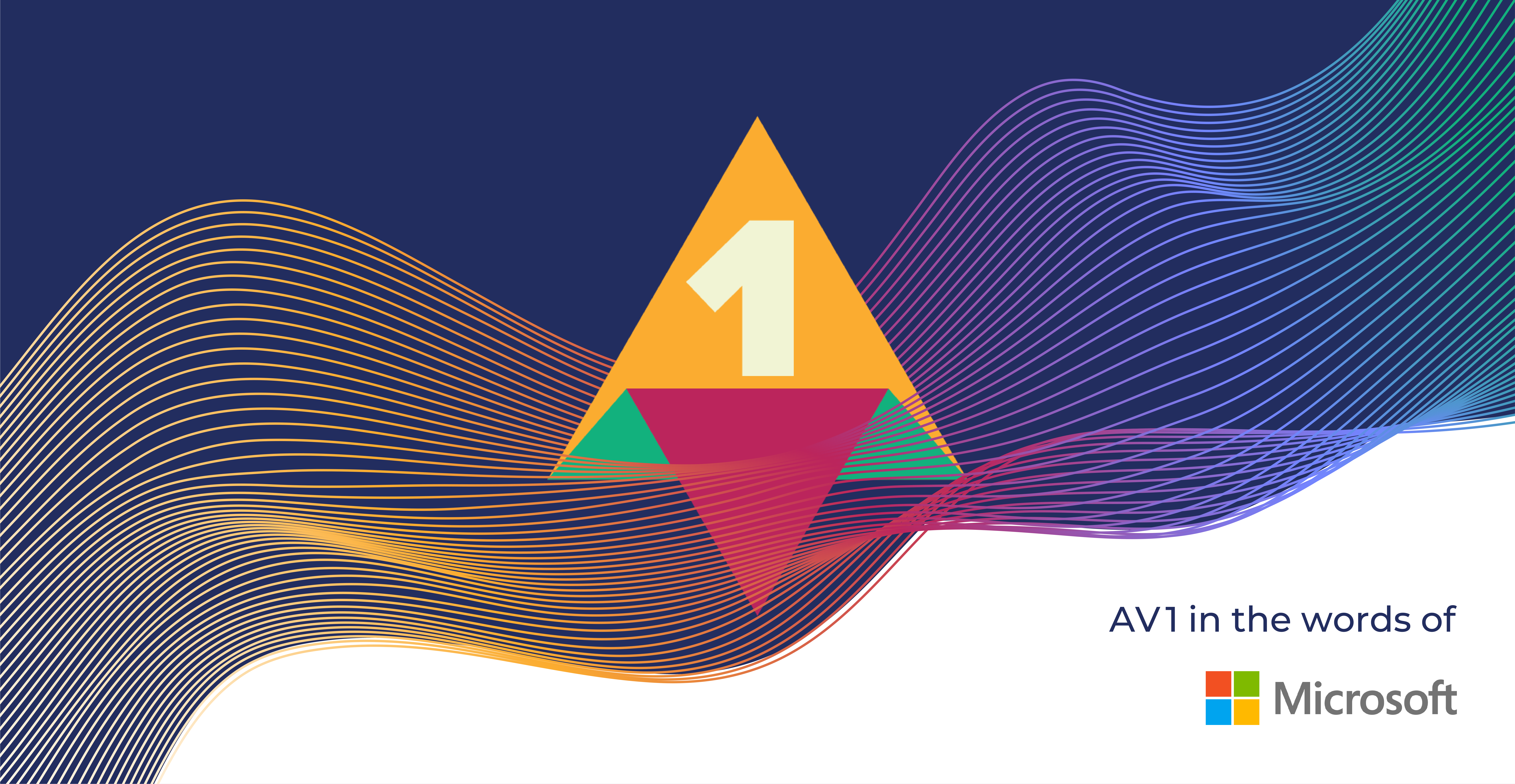Microsoft Boosts Meeting Quality with AV1
As of 2023, over 320 million people use Microsoft Teams every day¹ to connect remote workforces securely. But when you’re bringing people together in video meetings that may consist of dozens or even hundreds of people, delivering realistic video and screen sharing can be a challenge. Sasikanth Bendapudi, group engineering manager of real-time communication for Microsoft, talked to us about how Microsoft started using the AV1 codec to solve this and related challenges.
Delivering Better Quality to Users in Challenging Conditions
Microsoft has been using AV1 for video meetings since late 2023 and introduced it for accelerating screen sharing in March 2024². “Using AV1 for Microsoft Teams results in sharper text and smoother movement (such as scrolling) among other benefits while lowering bandwidth usage by 63% compared to H.264,” said Bendapudi.
Speaking about the challenges in delivering quality real-time video online, Bendapudi said, “Often complex meeting scenarios don't tend to work well, because either the network or even capabilities of the devices may not necessarily scale. AV1 definitely makes a huge dent on the network aspect, because it's much more efficient.”
Using AV1 has several significant impacts. "Once we reduce the size of the payload that we transfer over the wire, we also get other benefits, apart from the high quality, such as reliable transmission, lesser bandwidth utilization, and energy savings. All of these are a package deal that we really want to deliver as value to our users," Bendapudi commented.
He also feels that the time for AV1 has come: “Today, AV1 is picking up good momentum. If we look at the history of codecs, very few have had the industry-wide consensus that encourages industry players of all sizes to make a bet on it. I think AV1 definitely has that critical mass, and it's a big part of why we are also aligned with the vision to try and amplify its availability even further.”
Growing Adoption
While the industry is embracing the benefits of AV1, some question if it’s suitable for low-end devices at the current moment. Bendapudi feels that conditions are becoming more favorable than ever before.
“Running AV1 purely in software is challenging because it’s a complex codec, but with newer devices offering dedicated AV1 offload capabilities, we’re addressing this,” said Bendapudi. “Many devices now are also equipped with AV1 hardware support, which wasn’t as common early on.”
This hardware offload means that content providers can fully use AV1’s benefits on capable devices. “While low-end and power-efficient devices are often seen as overlapping, these newer ‘power-efficient’ devices with dedicated AV1 hardware can handle high-quality video processing, redefining what ‘low-end’ can actually support,” said Bendapudi.
The adoption of AV1 is also growing beyond the larger industry players who have large R&D budgets. Bendapudi sees this as a natural part of business and technological evolution: “The championing of new codecs tends to be driven by bigger players who evangelize about the benefits. But I do see a lot of curiosity in the industry to adopt it, especially with more availability of hardware and software coding implementations making progress. I think AV1 has huge potential in going beyond just the big players.”
The Value of AOMedia Membership
Microsoft was a founding member of AOMedia in 2015, and Bendapudi places high value on the partnership, especially considering that Microsoft’s ecosystem includes third-party platforms and software.
"Sometimes, we can't move the needle just within the company alone. Standardization across the industry, whether it's software or hardware requirements, can help us work well on third-party platforms. In order to achieve that, we need consensus. This is a great reason for a forum like AOMedia,” said Bendapudi
References
